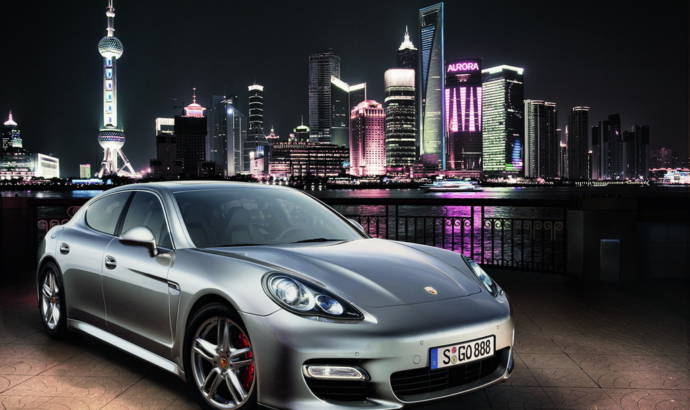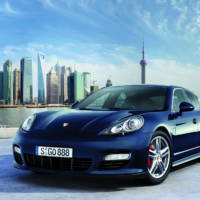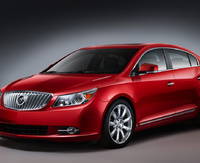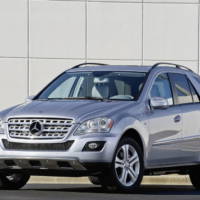The German automaker announced that their Porsche Panamera will have its official debuting in Shanghai, on the 20th of April at 11:30 am. If you wonder why the chose China for such an event is because Asia represents a strong market for Porsche where sales have increased in the last fiscal year by 140 percent in China alone. On a global scale Porsche hopes to sell at least 20,000 Panameras yearly throughout the entire lifecycle of the car.
The Porsche Panamera will harness a highly efficient V8 engine that will produce around 500 horsepower, and besides the Double-Clutch Gearbox and the Start-Stop system in conjunction with automatic transmission other technical inovations that will be available as a world’s first include the adaptive air suspension as well as the rear spoiler with multi-dimensional adjustment .
The Porsche Panamera is expected to arrive in showrooms by October 2009
Porsche press release :
The world debut of the Porsche Panamera is just around the corner: At 11:30 am on 20 April, Dr. Ing. h.c. F. Porsche AG, Stuttgart, will be presenting the Company’s four-seater Gran Turismo to the international public at Auto Shanghai in China. “The Panamera will thrill aficionados of exclusive, sporting cars the world over”, states Porsche’s President and Chief Executive Officer Dr. Wendelin Wiedeking, adding that through this presentation in Shanghai the Company is sending a powerful message to the whole world and demonstrating its strong commitment to the up-and-coming Asian markets: “This is a clear signal that we count on these markets and have full confidence in their future economic potential”, says Wiedeking.
The increase in Porsche sales in Asia during the last fiscal year was particularly significant, China alone accounting for customer deliveries of some 7,600 units in fiscal year 2007/2008, equal to growth in sales of more than 140 per cent.
Porsche’s new, fourth model series – following the 911, the Boxster/Cayman, and the Cayenne sports utility – is of great strategic significance to the Company. Introducing the four-door Panamera, Porsche is making a strong move into the luxury performance segment, appealing to customers who, over and above the exclusive comfort and spaciousness of a luxury saloon, also expect the consistent sporting performance so typical of a Porsche. In this way Porsche is reaching brand-new groups of customers while at the same time offering existing customers of the marque a whole new range of options.
The premium segment which the Panamera is now entering extends all the way from the classic GT sports car to the luxurious performance saloon, accounting in economically good times for a global market volume of approximately one million new cars a year. Porsche plans to sell an annual average of at least 20,000 units of the Panamera worldwide throughout the entire lifecycle of the car.
Apart from the PDK Porsche-Doppelkupplungsgetriebe or Double-Clutch Gearbox and the first Start-Stop system in conjunction with automatic transmission, the technical innovations the Panamera is introducing for the first time in a production model in the luxury performance class include Porsche’s new adaptive air suspension with additional air volume on-demand in each spring as well as active aerodynamics featuring a rear spoiler with multi-dimensional adjustment moving up at the appropriate speed on the top-of-the-range Panamera Turbo.
Porsche’s development engineers have given particular attention to the Panamera’s fuel economy: Featuring highly efficient V8 power units with Direct Fuel Injection, intelligent lightweight construction, automatic Start-Stop, optimum aerodynamics, Porsche’s innovative Doppelkupplungsgetriebe and various technical features consistently reducing frictional and hydraulic losses, the Panamera offers truly
outstanding fuel economy for a four-door Gran Turismo of this calibre, again setting new standards against its direct competitors.
Like the Cayenne, the new Panamera will be built at Porsche’s plant in Leipzig. It will be entering the market in Europe, South America and parts of Asia in September 2009, in North America and Australia in October, and in China in early 2010.

08 Apr 2009
0




